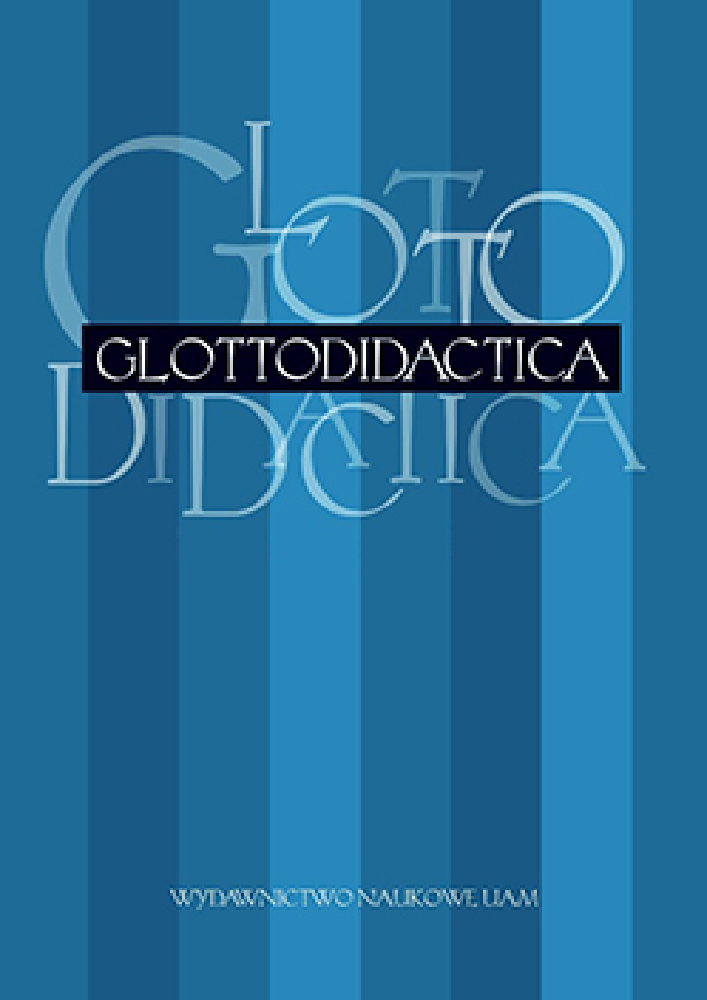Abstract
This article explores the issue of the collective consciousness and self-consciousness in teaching and learning foreign languages. A review of the literature on the current issues of interculturality and plurilingualism in relation to the notions of consciousness and self-consciousness is first detailed. The issue raised allows us to question the impact of this consideration in terms of the consequences of this work on class dynamics. In fact, can the awareness and self-awareness of learners regarding intercultural and plurilingual practices exist outside of a co-construction with other learners, with the teacher? The research methodology is based on an analysis of interactions in the language class which brings into play these intercultural and plurilingual approaches (resulting from the LISTIAC and FLSCAN projects). It reports significant results on the co-construction of consciousness and emerging self-consciousness in the language class about the singular universals of languages and cultures. The discussion shows the value of a collective, and no longer purely personal understanding (for the learner) of consciousness and self-awareness of these plurilingual and cultural experiences.
Literaturhinweise
Aalto, E., Abel A., Gilly A., Schnitzer D.K. (2016). Teaching the language of schooling in the context of diversity : Study materials for teacher development. Graz : European Centre for Modern languages / Council of Europe. https://maledive.ecml.at/Studymaterials/Individual/Visualisinglanguagerepertoires/tabid/3611/language/fr-FR/Default.aspx [accès : 20.11.2021].
Abdallah-Pretceille, M. (1995). Relations et apprentissage interculturels, Paris : Armand Colin.
Abdallah-Pretceille, M. / Porcher, L. (1998). Ethique de la diversité et éducation, Paris : PUF, coll. L’éducateur.
Auger, N. (2005). Comparons nos langues. Démarche d’apprentissage du français auprès d’enfants nouvellement arrivés. Editions CNDP, collection Ressources Formation Multimédia, fabrication : CRDP Languedoc-Roussillon / CDDP du Gard, DVD (26 min.) et guide pédagogique, 15 pages.
Auger, N. (2010). Elèves nouvellement arrivés en France. Réalités et Perspectives en classe, préface de J.-L. Chiss. Paris : Editions des Archives contemporaines.
Auger, N. (2015). Langagae, langues et enseignement : Perspectives sociolinguistique et didactique. http://uoh.univ-montp3.fr/sociolinguistique/co/Langage_langues_et_enseignement_36.html [accès : 11.04.2022].
Auger, N. (2018). Le MOOC MALEDIVE : un site d’auto-formation pour les enseignants de langue et de culture qui accueillent des élèves migrants dans leur classe. In : C. Nikou (dir.), « Favoriser l’intégration scolaire : l’apport de la classe de langue-culture », ContACTES (p. 61–69). Athènes : Association des Professeurs de Français f.u.-Grèce.
Auger, N. / Le Pichon, E. (2021). Défis et richesses des classes multilingues. Construire des ponts entre les cultures. Paris : ESF.
Blanchet P. / Coste, D. (2010). Regards sur la notion d’ « interculturalité » pour une didactique de la pluralité linguistique et culturelle. Paris : L’Harmattan, coll. Espaces discursifs.
Bronckart, J.-P. (1997). Activités langagières, textes et discours. Pour un interactionnisme sociodiscursif. Genève : Delachaux et al.
Busch, B. (2006). Language biographies for multilingual learning. PREASA Papers, 24, 5–18.
Candelier, M. (2016). Activités métalinguistiques Pour une didactique intégrée des langues. Le français aujourd’hui, 192 (1), 107–116. https://www.cairn.info/revue-le-francais-aujourd-hui-2016-1-page-107.htm [accès : 07.10.2021].
Cummins, J. (1980). The cross-lingual dimensions of language proficiency : Implications for bilingual education and the optimal age issue. Tesol Quarterly, 14, 175–187.
Dufour, M. (2014). Du concept de répertoire langagier et de sa transposition didactique. Lidil. Revue de linguistique et de didactique des langues, 49, 179–194. DOI : https://doi.org/10.4000/lidil.3515.
Galisson, R. (1991). De la langue à la culture par les mots. Paris : CLE International.
Guimelli, Ch. (dir.) (1994). Structures et transformation des représentations sociales. Neuchâtel : Delachaux et Niestlé.
Gumperz, J. (1972). The communicative competence of bilinguals. Language in Society, 1 (1), 143–154.
Kerbrat-Orecchioni, C. (1990, 1992, 1994). Les interactions verbales, 3 volumes. Paris : A. Colin.
Kerbrat-Orecchioni, C. (2005). Le discours en interaction. Paris : A. Colin.
Maingueneau, D. (1991). L’analyse de discours. Introduction aux lectures de l’archive. Paris : Hachette Supérieur.
Ministère de L'éducation nationale. (2012). Circulaire relative à la scolarisation des élèves allophones nouvellement arrivés. https://www.education.gouv.fr/bo/12/Hebdo37/MENE1234231C.htm [accès : 05.05.2022].
Molinié, M. (2010). La méthode biographique : de l’écoute de l’apprenant de langues à l’herméneutique du sujet plurilingue. In : P. Blanchet / P. Chardenet (dir.), Guide pour la recherche en
didactique des langues et descultures : approches contextualisées (p. 144–154). Montréal : Éditions des archives contemporaines; Agenceuniversitaire de la francophonie.
Piaget, J. (1946). La formation du symbole chez l’enfant. Genève : Delachaux et al.
Sauvage, J. (2014). Acquisition et didactique du FLS : processus psycho-sociaux et interactionnisme socio-discursif. Ela. Etudes de linguistique appliquée, 174, 157–164.
Sauvage, J. (2015). L’acquisition du langage. Un système complexe. Louvain-la-Neuve : Academia.
Lizenz
 This work is licensed under a Creative Commons Attribution-NoDerivatives 4.0 International License.
This work is licensed under a Creative Commons Attribution-NoDerivatives 4.0 International License.
Authors
Authors of texts accepted for publication in Glottodidactica are required to complete, sign and return to the Editorial team’s office the Agreement for granting a royalty-free license to works with a commitment to grant a CC sub-license.
Under the agreement, the authors of the texts published in Glottodidactica grant Adam Mickiewicz University in Poznań a non-exclusive, royalty-free license and authorize the use of Attribution-NoDerivatives 4.0 International (CC BY-ND 4.0) Creative Commons sub-license.
The authors retain the right to the free disposal of the work.
Users
Interested Internet users are entitled to use works that have been published in Glottodidactica since 2016, under the following conditions:
▪ attribution – obligation to provide, together with the distributed work, information about the authorship, title, source (link to the original work, DOI) and the license itself.
▪ no derivatives – the work must be preserved in its original form. Without the author's consent, it is not possible to distribute the modified work in the form of translations, publications, etc.
Copyrights are reserved for all texts published before 2016.
Miscellaneous
Adam Mickiewicz University in Poznań retains the property right as a whole (layout, graphic form, title, cover design, logo etc.).
Privacy statement
The names and email addresses published on this journal site will be used exclusively for the purposes declared by this journal and cannot be used for any other purpose or by any other party.





